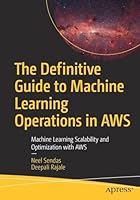
Delivering Business Intelligence with Microsoft SQL Server 2016, 4th Edition
- Length: 880 pages
- Edition: 4
- Language: English
- Publisher: McGraw-Hill Education
- Publication Date: 2016-11-02
- ISBN-10: 1259641481
- ISBN-13: 9781259641480
- Sales Rank: #288525 (See Top 100 Books)
Distribute Actionable, Timely BI with Microsoft® SQL Server® 2016 and Power BI
Drive better, faster, more informed decision making across your organization using the expert tips and best practices featured in this hands-on guide. Delivering Business Intelligence with Microsoft SQL Server 2016, Fourth Edition, shows, step-by-step, how to distribute high-performance, custom analytics to users enterprise-wide. Discover how to build BI Semantic Models, create data marts and OLAP cubes, write MDX and DAX scripts, and share insights using Microsoft client tools. The book includes coverage of self-service business intelligence with Power BI.
- Understand the goals and components of successful BI
- Build data marts, OLAP cubes, and Tabular models
- Load and cleanse data with SQL Server Integration Services
- Manipulate and analyze data using MDX and DAX scripts and queries
- Work with SQL Server Analysis Services and the BI Semantic Model
- Author interactive reports using SQL Server Data Tools
- Create KPIs and digital dashboards
- Implement time-based analytics
- Embed data model content in custom applications using ADOMD.NET
- Use Power BI to gather, model, and visualize data in a self-service environment
Table of Contents
Part I Business Intelligence
Chapter 1 Equipping the Organization for Effective Decision Making
Chapter 2 Making the Most of What You’ve Got: Using Business Intelligence
Chapter 3 Seeking the Source: The Source of Business Intelligence
Chapter 4 Two, Two, Two Models in One: The BI Semantic Model
Chapter 5 First Steps: Beginning the Development of Business Intelligence
Part II Defining Business Intelligence Structures
Chapter 6 Building Foundations: Creating Data Marts
Chapter 7 Transformers: Integration Services Structure and Components
Chapter 8 Fill ’er Up: Using Integration Services for Populating Data Marts
Part III Working with a Tabular BI Semantic Model
Chapter 9 Setting the Table: Creating a Tabular BI Semantic Model
Chapter 10 A Fancy Table: Tabular BI Semantic Model Advanced Features
Part IV Working with a Multidimensional BI Semantic Model
Chapter 11 Cubism: Measures and Dimensions
Chapter 12 Bells and Whistles: Special Features of OLAP Cubes
Chapter 13 Writing a New Script: MDX Scripting
Chapter 14 Pulling It Out and Building It Up: MDX Queries
Part V Modeling and Visualizing with Power BI
Chapter 15 Power to the People: Loading Data with Power BI
Chapter 16 I Can See Clearly Now: Data Visualization with Power BI Reporting
Part VI Delivering
Chapter 17 Special Delivery: Microsoft Business Intelligence Client Tools
Chapter 18 Let’s Get Together: Integrating Business Intelligence with Your Applications







